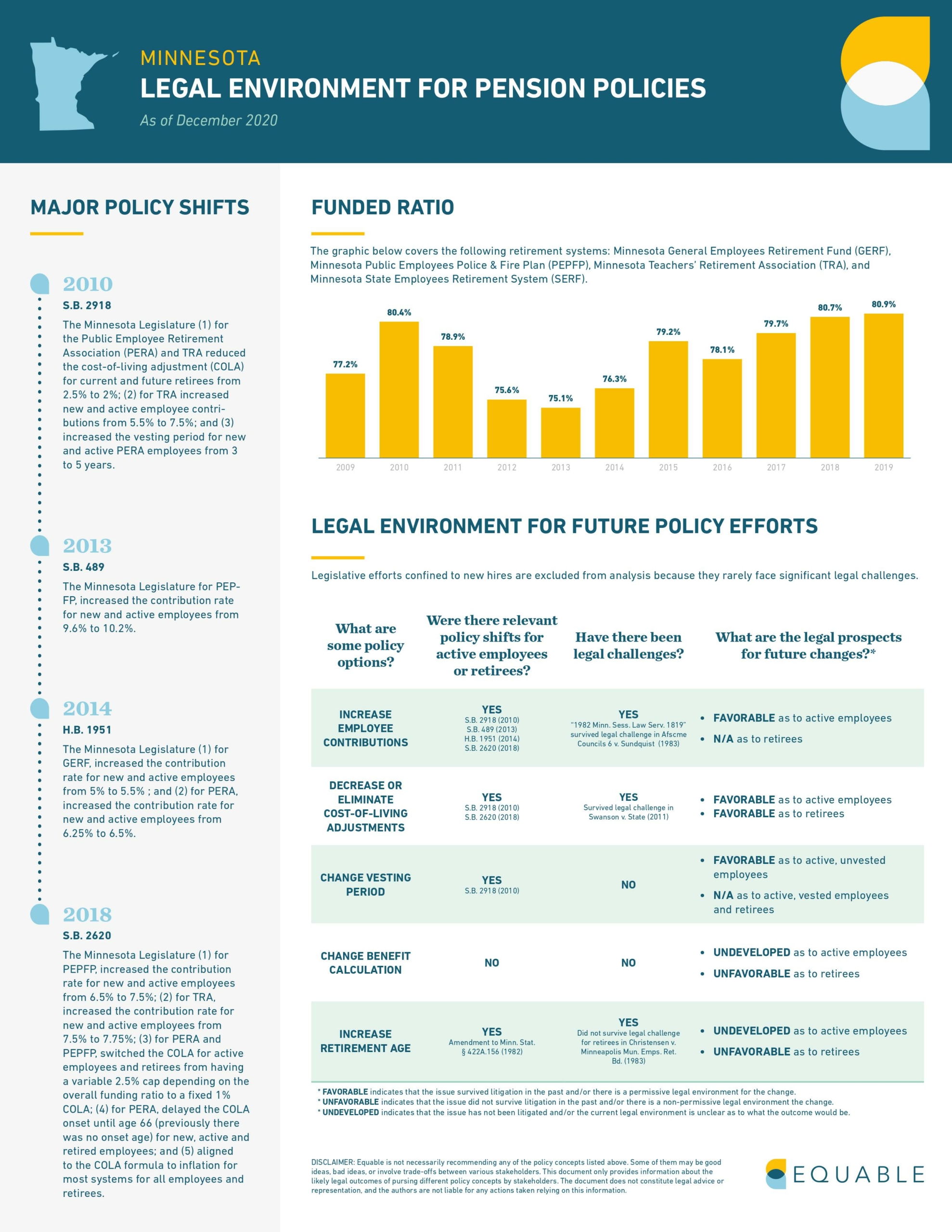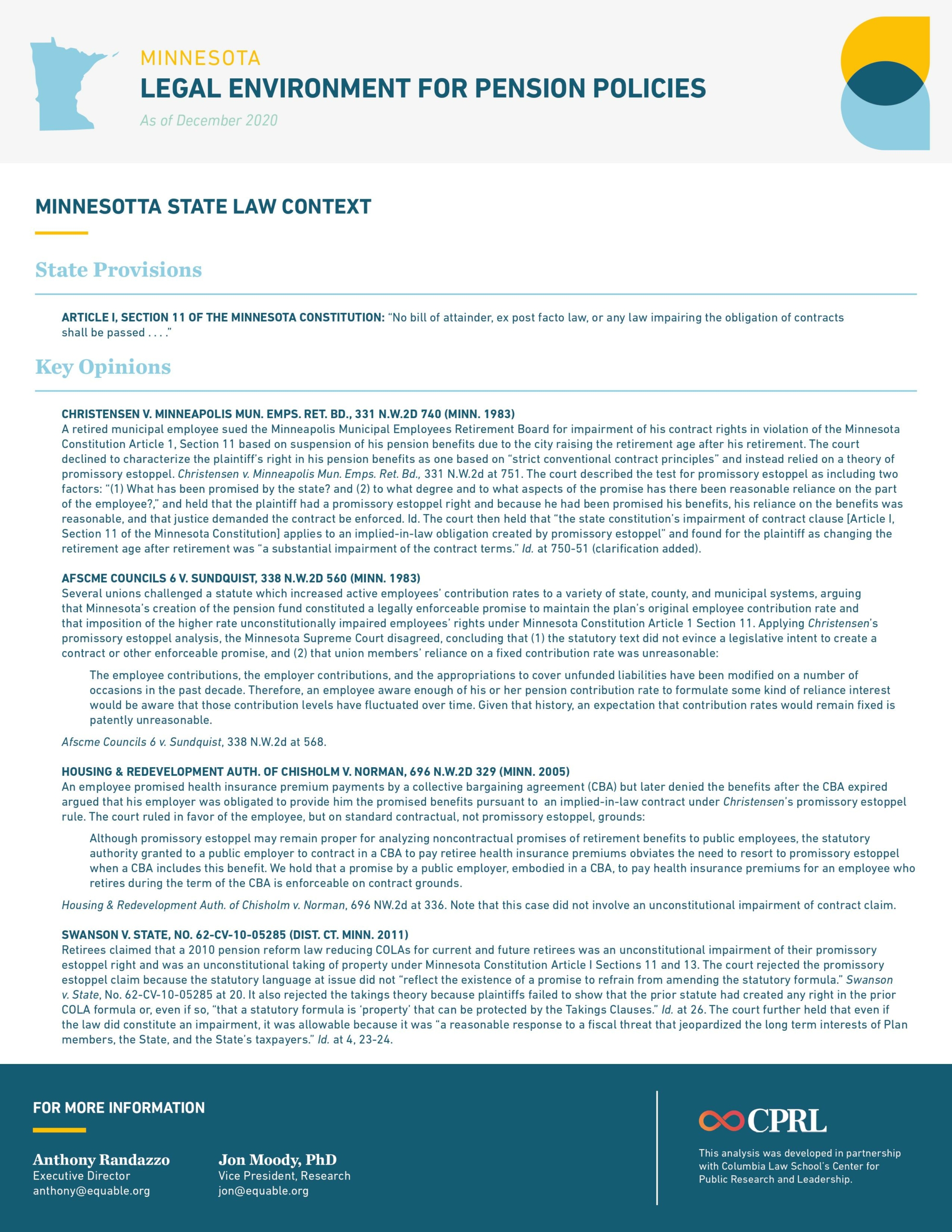Minnesota teachers’, public safety officers’, and public workers’ pension benefits are entitled to certain protections under state law and affirmed by court rulings. At the same time, the state does have some legal precedent that allows them to change particular aspects of retirement benefits.
In other words, Minnesota pension laws allow parts of public pension benefits to be changed by future state laws, but only certain parts of those benefits.
Equable Institute partnered with Columbia Law School’s Center for Public Research and Leadership to create infographics that map states’ pension governance. Understanding the legal environment for pension policies can be confusing for both lawmakers and public workers, but illuminating legally permissible policy pathways to improve funding sustainability and ensure adequate retirement income security for states’ workforces is essential.
Understanding Minnesota Pension Laws
In the case of Minnesota, state law allows the legislature to decrease cost-of-living adjustments for public workers. In 2010 and 2018, they did just that, ultimately capping future COLAs at 1%. Some public workers had sued the state in an effort to overturn this part of the law, but the court ruled the state was within its legal right to reduce the COLA because it was in the best interest of taxpayers to do so.
Legal precedent also allows the legislature to increase employee contributions and change workers’ vesting periods.
What’s unclear is whether Minnesota can change benefit calculations or increase the retirement age,
It is important to note that current retirees’ benefits have greater legal protection than those of active employees. Apart from reduced or eliminated COLAs, current retirees’ benefits cannot be taken away or reduced under Minnesota pension law.
Disclaimer: The information here doesn’t constitute legal advice or representation. Equable is not necessarily recommending any of the policies discussed in the infographic. Some may not work for certain states, others may not be desirable policy. Ultimately, any pension policy change should honor promises made to public workers and put them on a path to retirement security, while ensuring sustainable funding measures.



